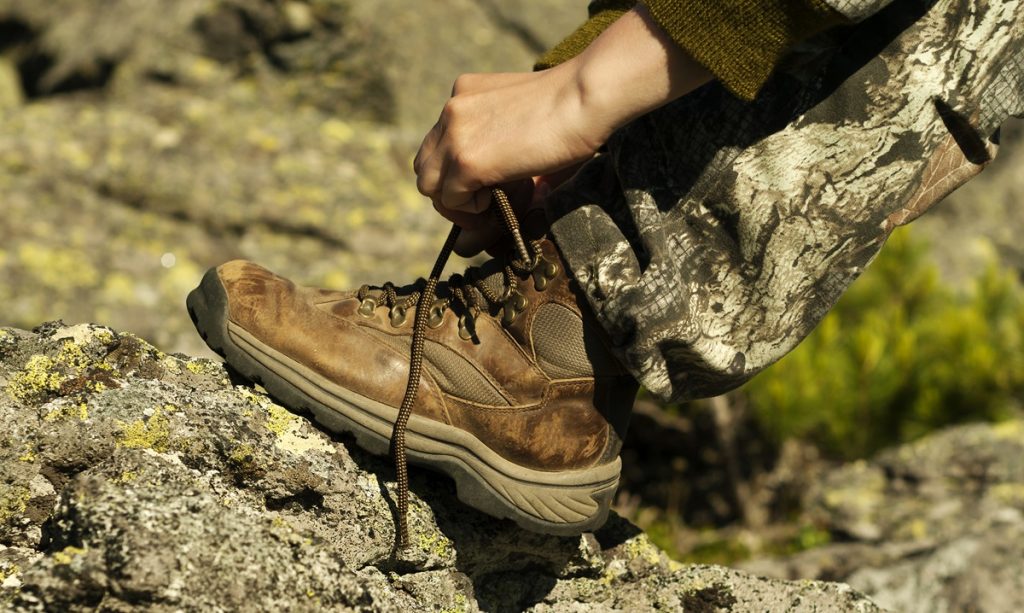Ascending a towering mountain peak is an exhilarating and challenging endeavor.
As you embark on this vertical odyssey, your footwear plays a crucial role in ensuring a safe and comfortable climb.
The transition from the approach to the summit presents unique demands, and choosing the right men’s mountaineering boots can make all the difference.
In this article, we’ll explore practical tips to help you navigate this transition seamlessly and conquer those lofty heights.
Approach Footwear: Setting the Foundation
The approach phase is often the longest and most grueling part of the journey. During this initial leg, you’ll be trekking over varied terrain, from rugged trails to rocky scree fields. Your approach shoes should prioritize:
- Durability: Look for sturdy uppers and robust outsoles to withstand the rigors of the approach.
- Traction: Aggressive lugs and a sticky rubber compound will provide reliable grip on loose and uneven surfaces.
- Comfort: Well-cushioned midsoles and ample room for your toes will keep your feet happy over long distances.
Some popular choices for approach shoes include:
- Lightweight Hiking Boots: These offer ankle support and protection while remaining relatively nimble.
- Approach Shoes: Designed specifically for scrambling and easy climbing, these offer a balance of flexibility and traction.
- Trail Runners: For experienced mountaineers seeking minimal weight, these offer excellent breathability and agility.
Transitioning to Summit Footwear
As you near the technical climbing sections, it’s time to swap out your approach shoes for more specialized footwear. Here are some key considerations:
- Precise Edging: Summit shoes should have a stiff sole and a pronounced toe rand for precise edging on small holds.
- Sticky Rubber: Look for shoes with a high-friction rubber compound to maximize grip on rocky surfaces.
- Precise Fit: A snug, performance fit will allow you to smear and jam your feet with confidence.
Popular summit shoe options include:
| Shoe Type | Description |
| Rock Climbing Shoes | Designed for technical climbing, these offer unparalleled precision and sensitivity on the rock. |
| Mountaineering Boots | Combining the support of a hiking boot with the edging capabilities of a rock shoe, these are a versatile choice for mixed terrain. |
| Approach Shoes with Semi-Rigid Soles | Some approach shoes can handle moderate climbing sections, offering a good compromise between hiking and climbing performance. |
Transition Tips and Tricks
Now that you understand the footwear options, let’s dive into some practical tips for a smooth transition:
- Pack Efficiently: Carry your summit shoes in an easily accessible part of your pack, so you can swap them out quickly when needed.
- Test and Train: Practice transitioning between your approach and summit shoes beforehand to develop muscle memory and efficiency.
- Consider the Terrain: Evaluate the upcoming terrain and adjust your transition point accordingly. Don’t wait too long to switch to your climbing shoes.
- Take Care of Your Feet: Keep your feet dry and well-cared for during the transition to prevent blisters and discomfort.
- Communicate with Your Team: Coordinate your transitions with your climbing partners to ensure everyone is ready for the technical sections.

Conclusion: Reaching New Heights
Choosing the right footwear and mastering the transition from approach to summit is an essential skill for any multi-pitch mountaineer.
By following these tips, you’ll be better equipped to tackle the challenges that lie ahead, from rugged trails to vertical walls.
Remember, the right shoes can be the difference between a successful summit bid and an arduous struggle. So, lace up, take a deep breath, and embrace the journey upwards with confidence and enthusiasm!

